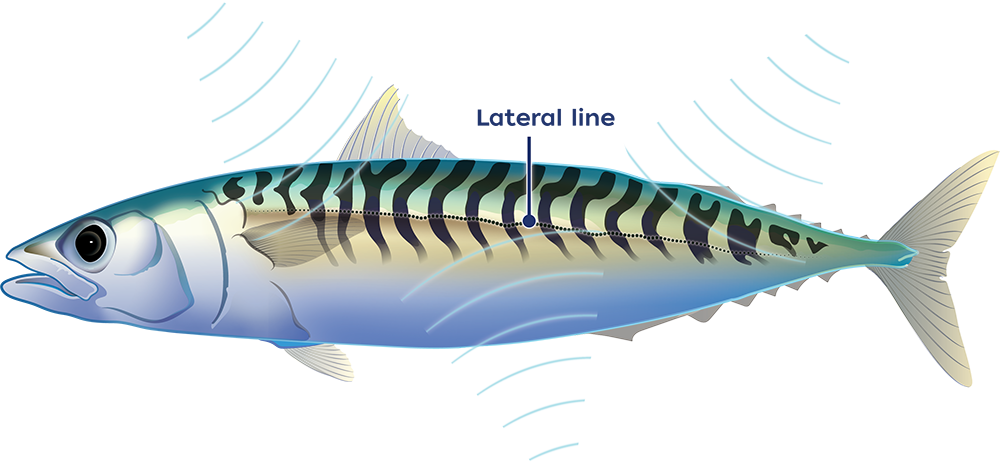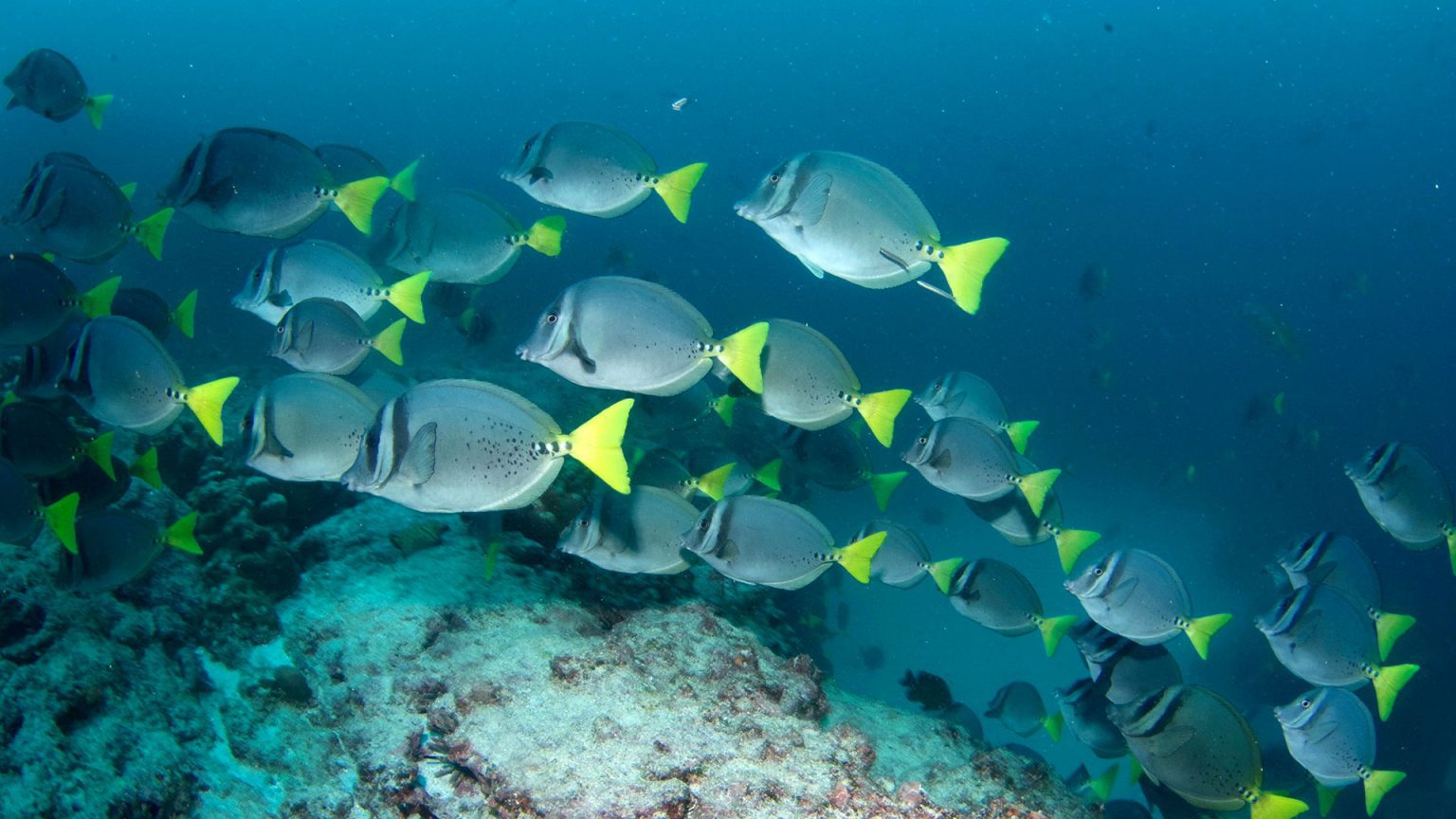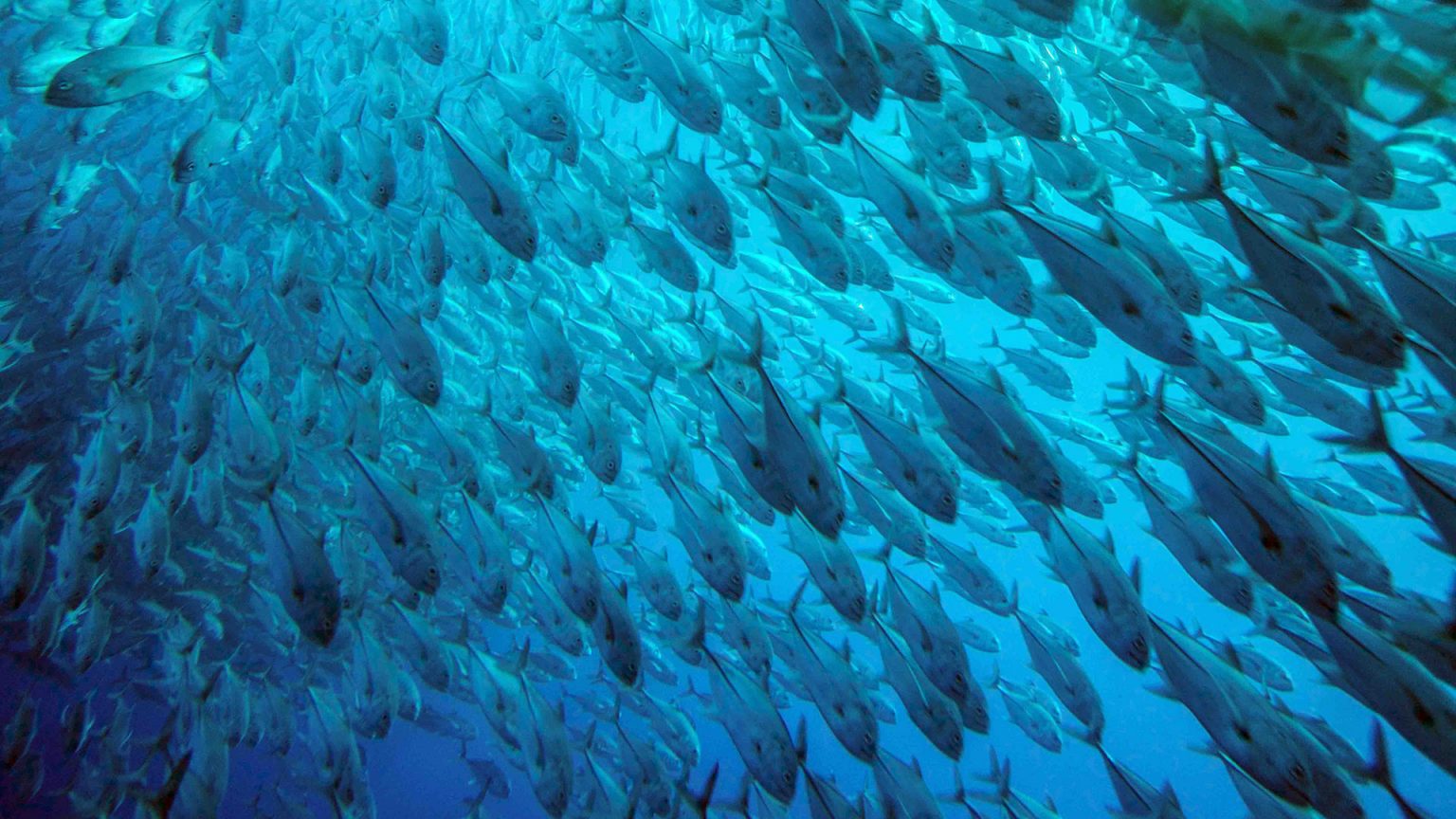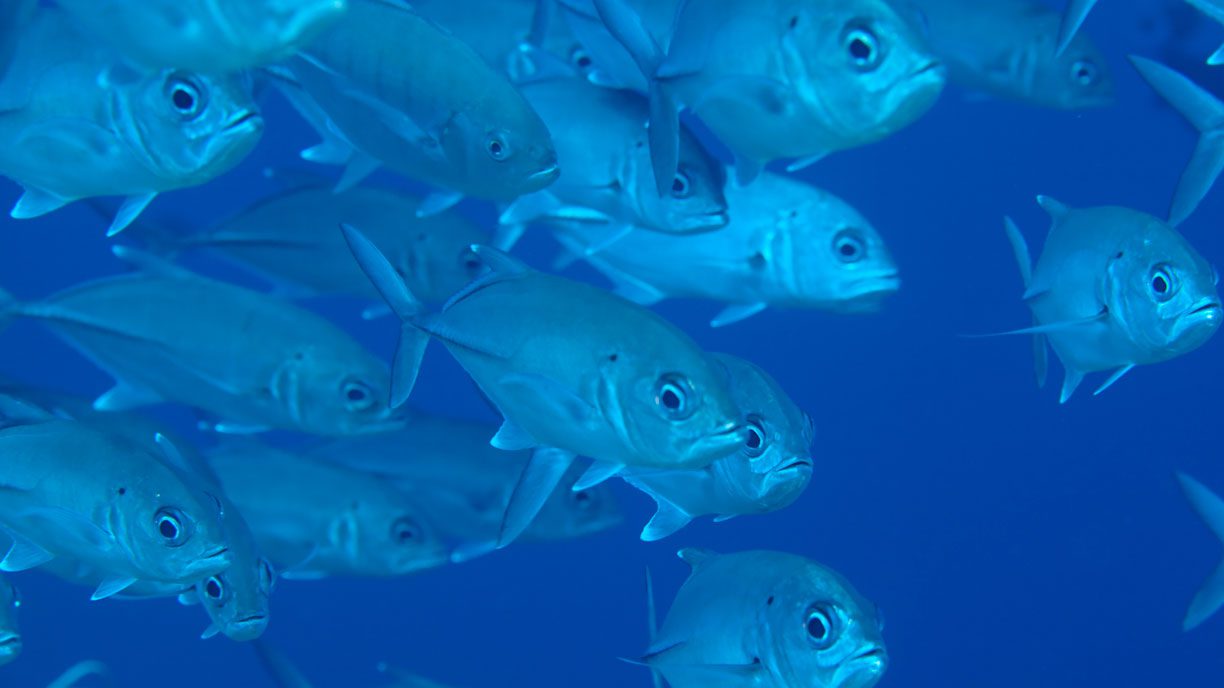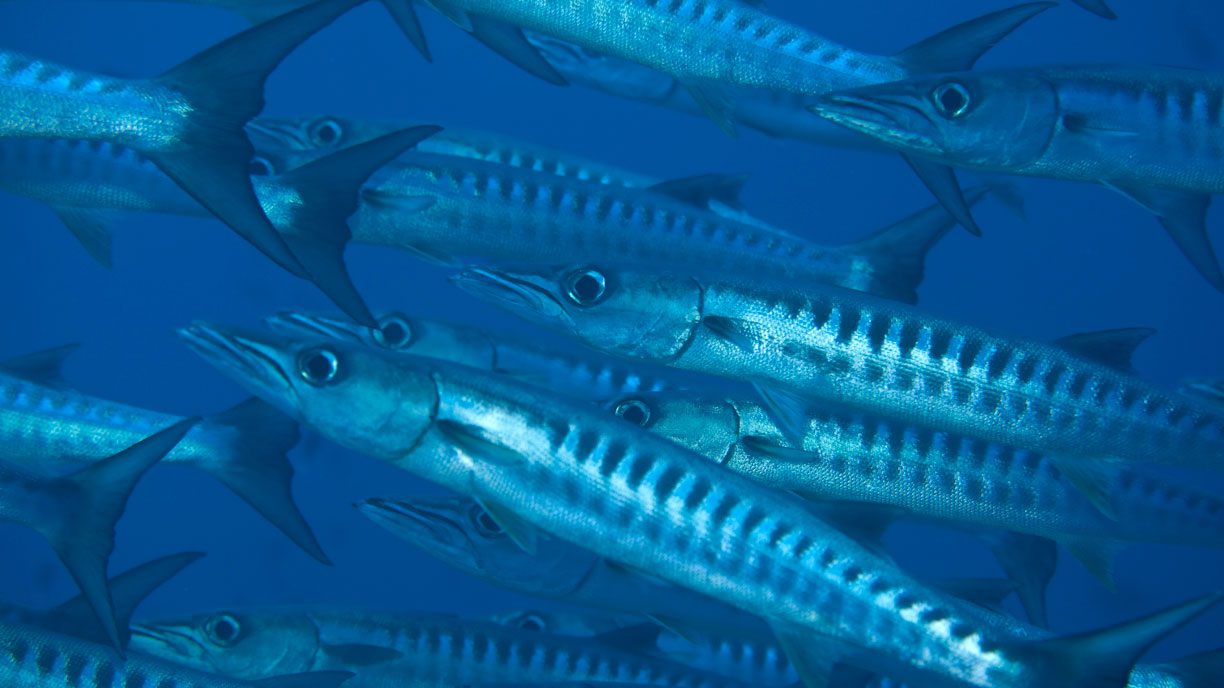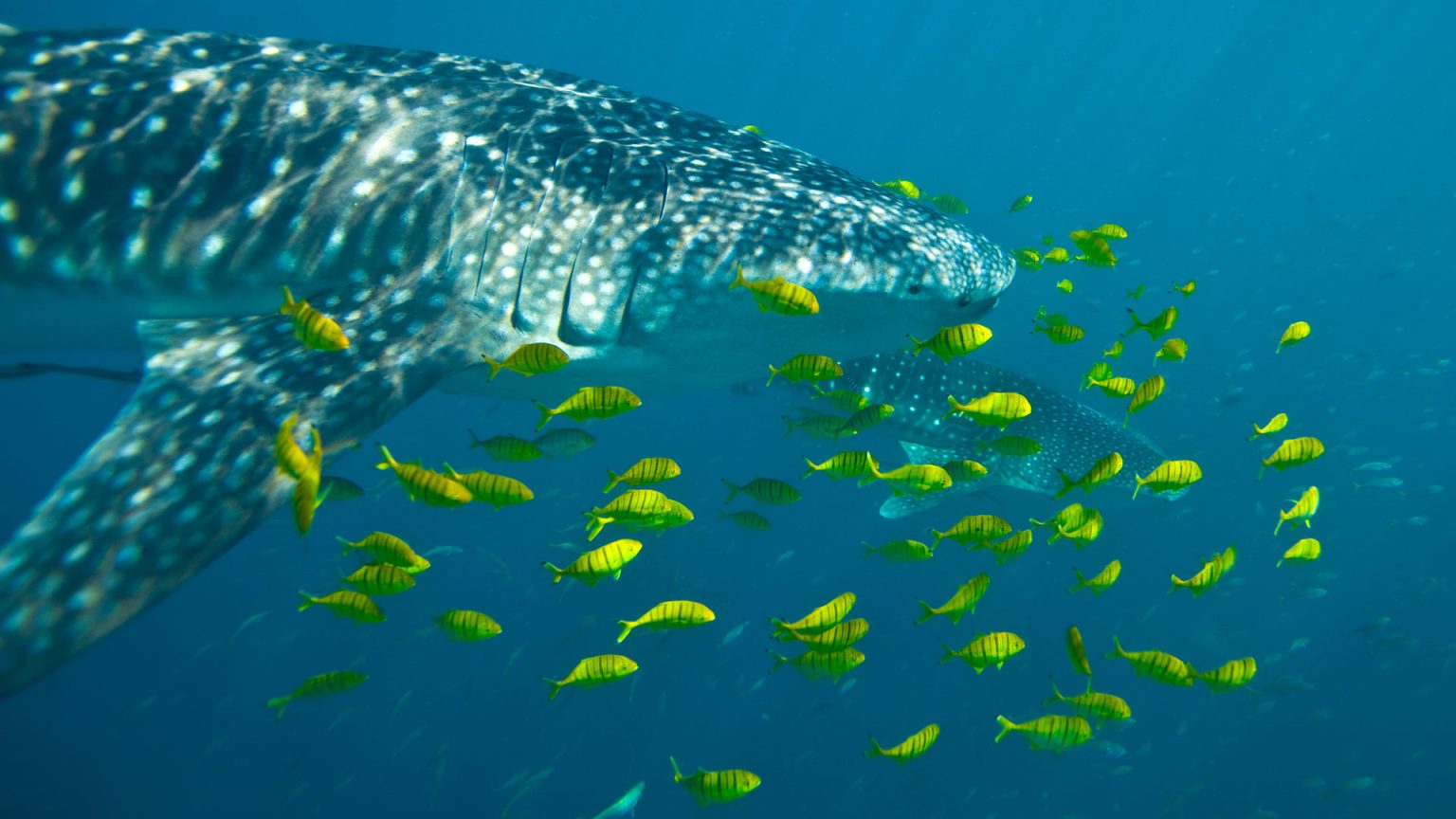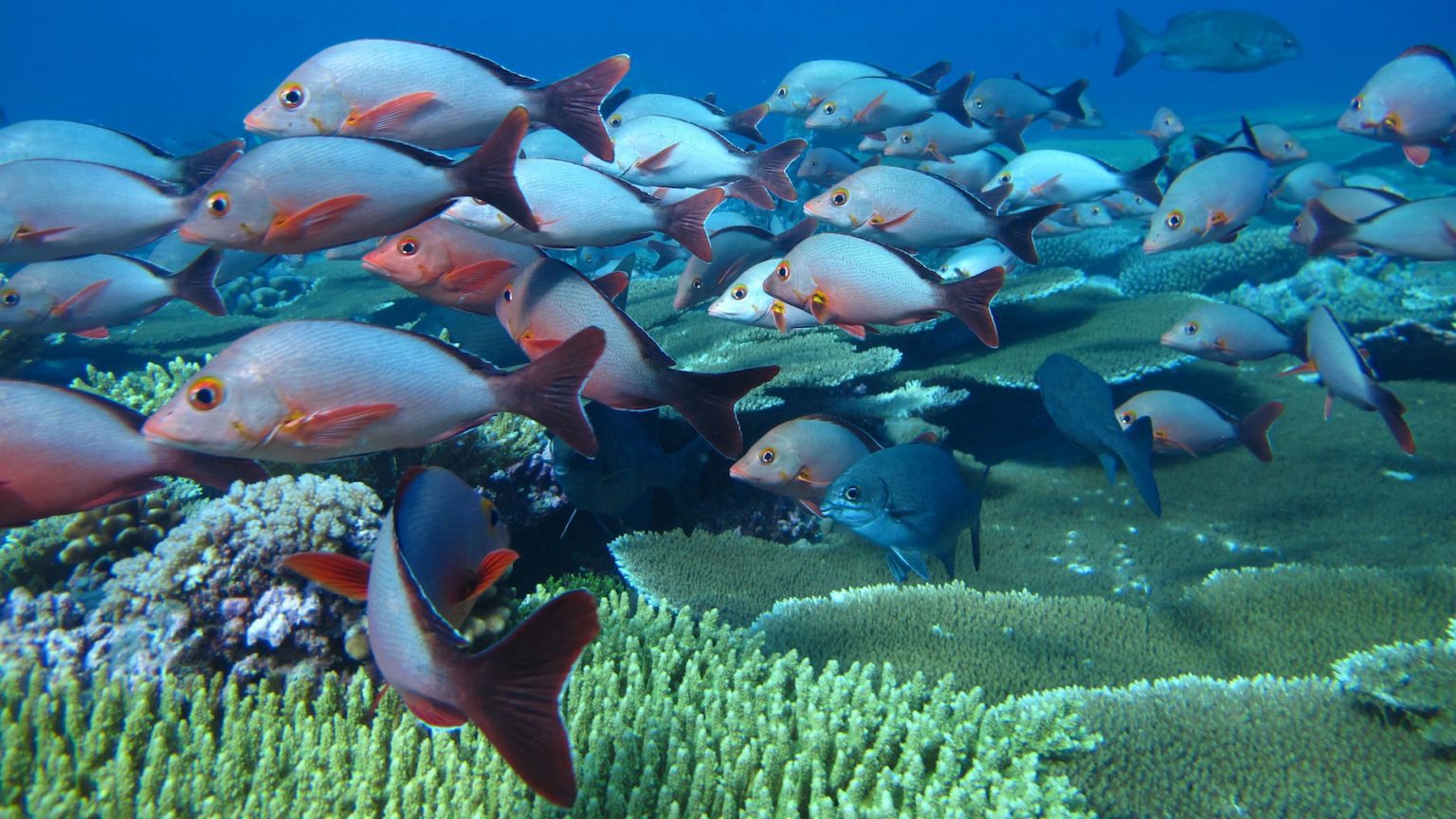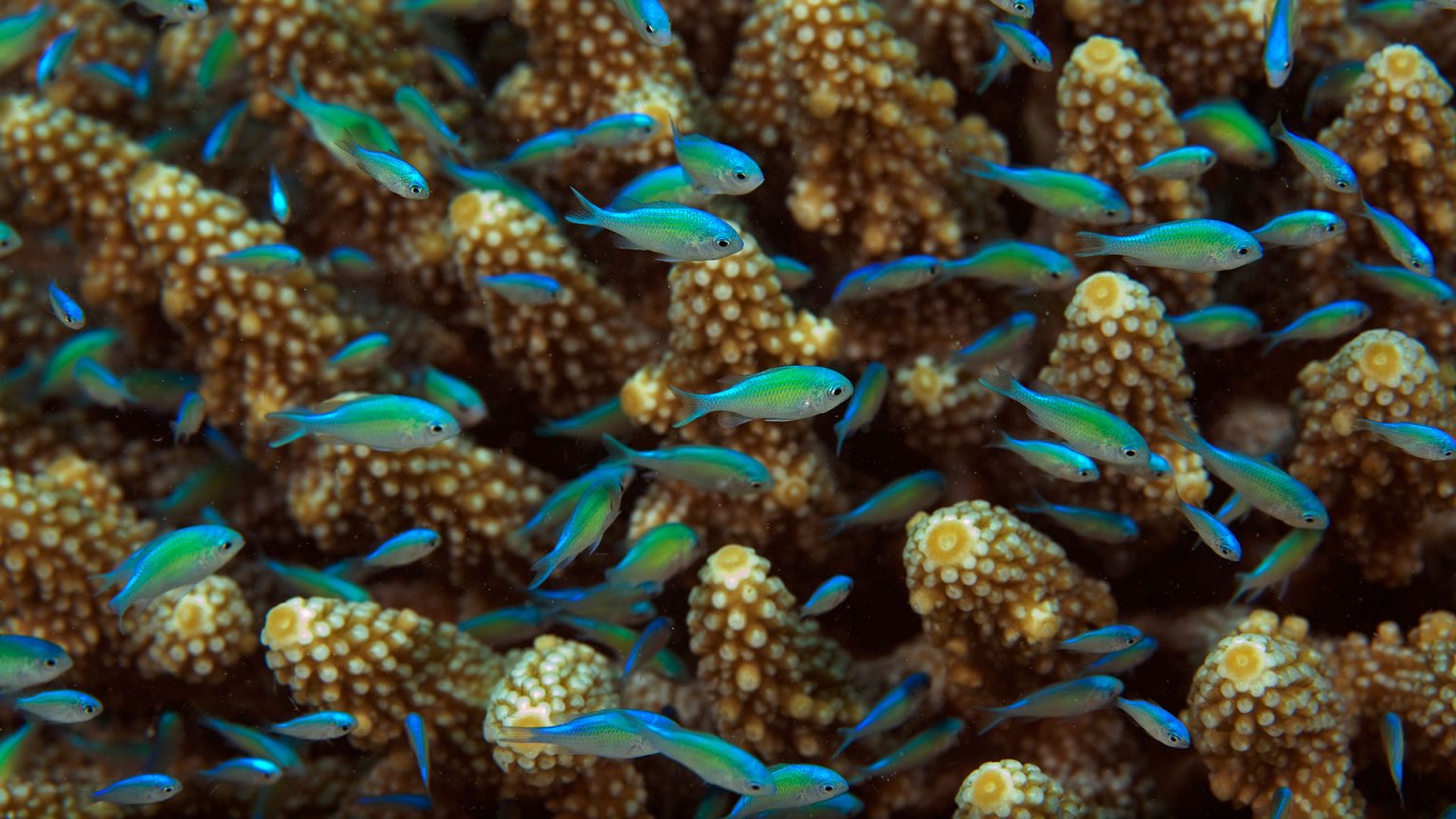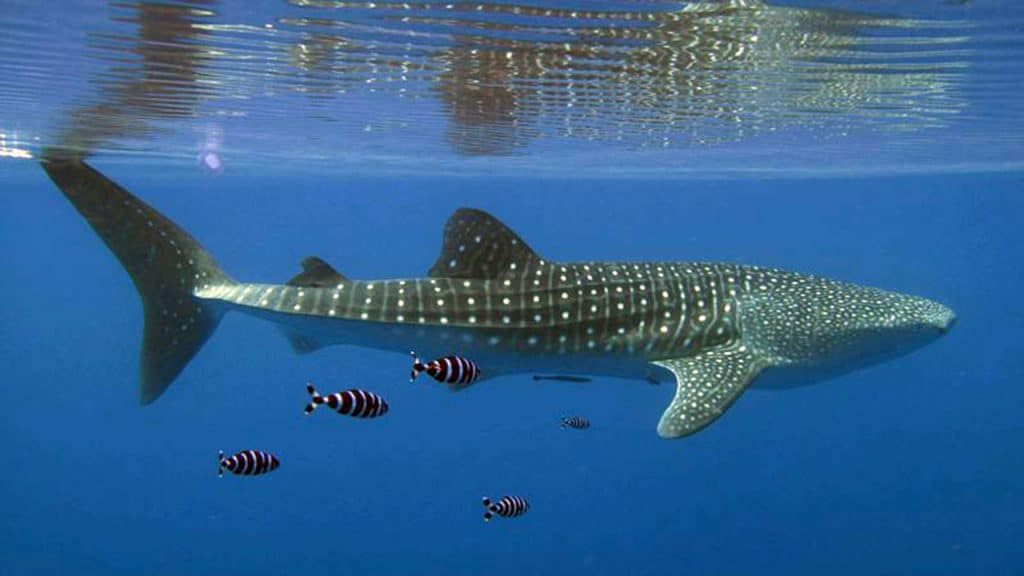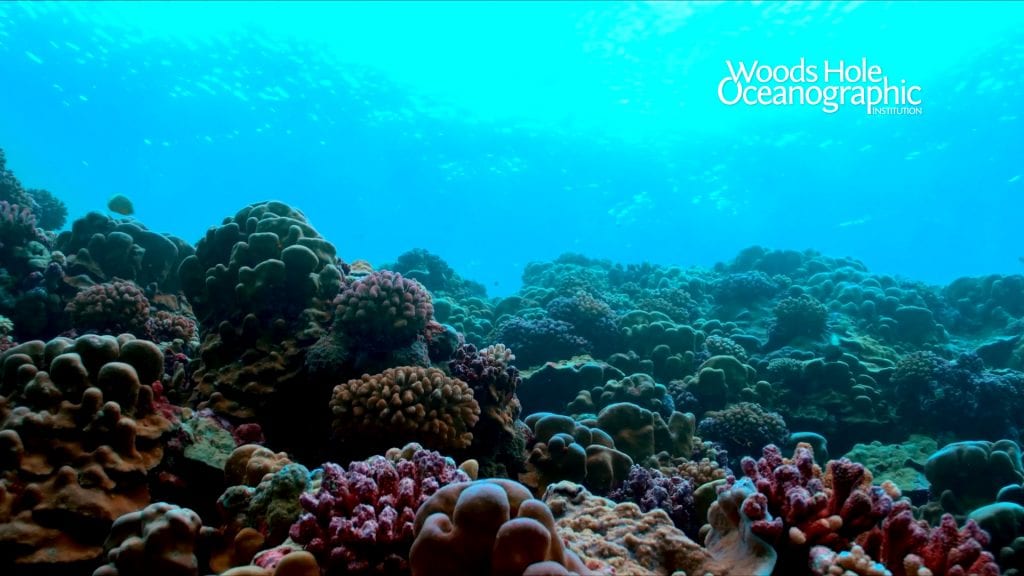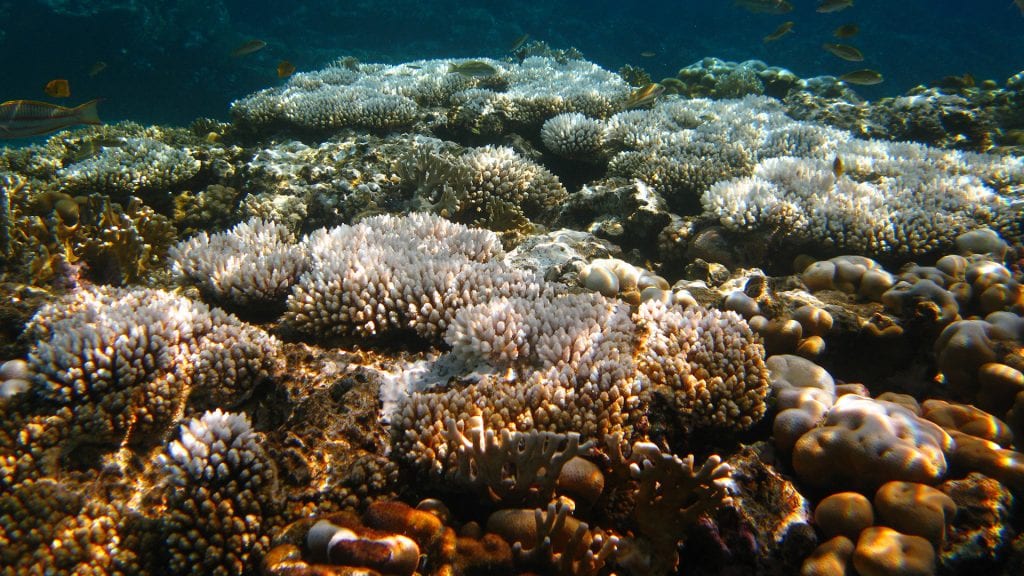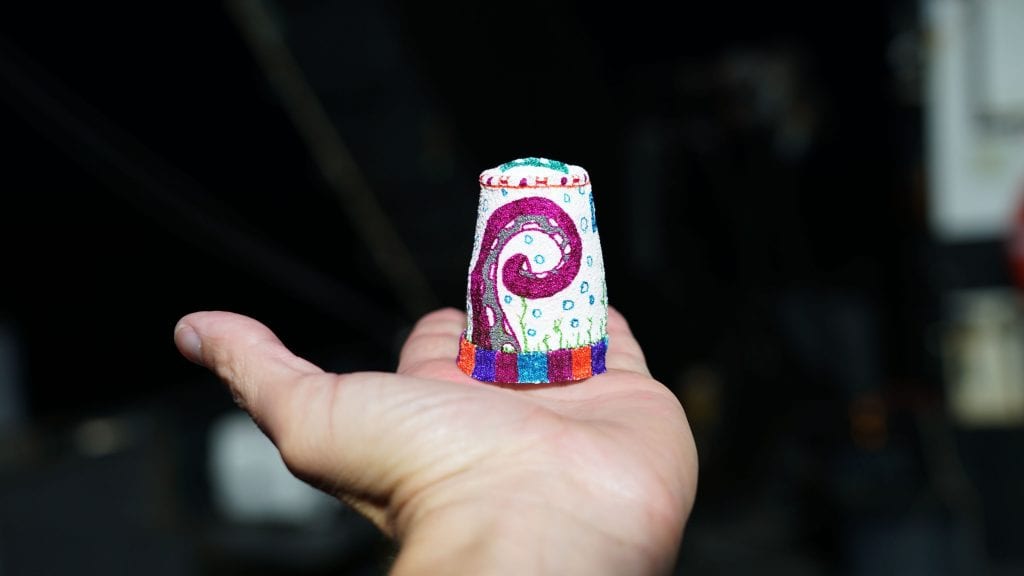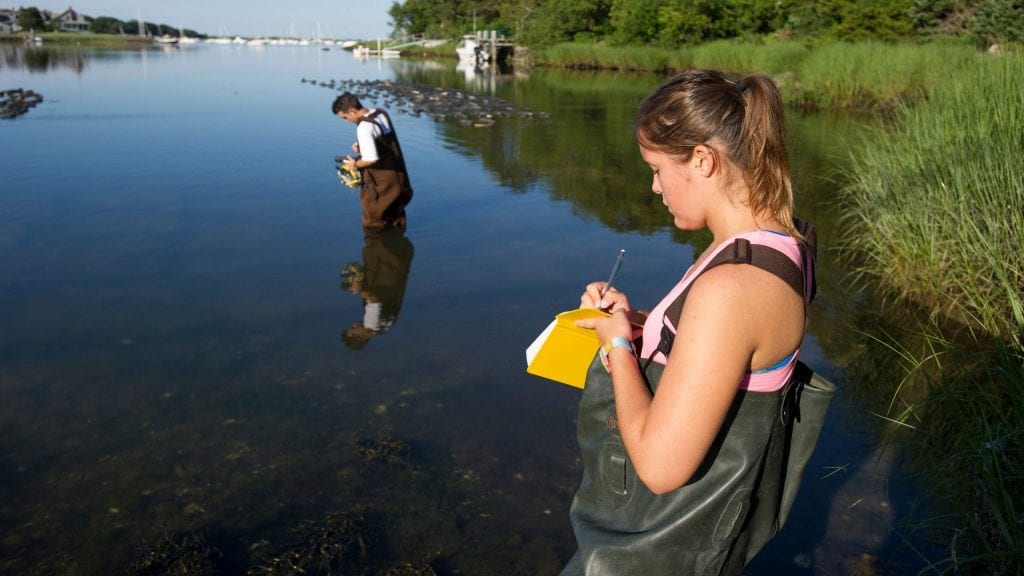In between the docks of Woods Hole, Massachusetts, a group of fish circle slowly, parting around yellow maple leaves floating on the ocean’s surface, sliding past one another in silvery streams. When a Cormorant bird lands in the water, the fish contract and then billow in fractions of a second, changing shape and pattern.
This split-second teamwork isn't just entrancing—it's a matter of survival for the fish. Swimming together helps them evade hungry predators, spot rich feeding areas, find mates, and even makes swimming easier by letting them slip through the water using less energy. Scientists are so fascinated by how fish work together that they're using their findings to unlock mysteries beyond the ocean—from how our brains work to how crowds of people make decisions together.
How do thousands of fish move together as fluidly as dancers, knowing when to turn or react to danger in an instant? Fish have a superpower for sensing their underwater world: a line of special cells along their bodies that feel pressure changes, called the lateral line. This line can feel waves made by other fish moving nearby, which helps them stay in formation—whether they're swimming in small groups or massive schools of millions.
Fish use their lateral line to maintain the perfect distance from their neighbors -- a “sweet spot” where they can sense each other’s movements without bumping into one another. This spacing allows them to conserve energy through a behavioral rule, “vortex phase matching,” which lets them ride the water swirls created by nearby fish, similar to how geese fly in formation or cyclists draft behind one another in races to reduce drag.
But the lateral line works differently depending on the situation. Scientists discovered this by conducting experiments that blocked certain senses. Even without their lateral line, fish could still swim together by using their eyesight. But in dark, crowded waters, fish could only coordinate with their closest neighbors and had trouble staying in formation with fish that were farther away. Both vision and the lateral line play an important role in helping fish work together.
Recently, researchers used virtual reality to discover how timing affects how nearby fish connect with each other. They found that neighboring fish are coupled in a kind of social dance. As one fish beats its tail, its neighbor waits for just the right moment to follow -- like dancers moving to the same beat. But there is no single leader. Rather, the group's movement emerges from thousands of tiny interactions between neighbors—like the twinkling of a swarm of fireflies, or humans clapping in applause after a performance.
When fish spot danger, like a diving Cormorant, only a few individuals might actually see or feel the predator. But because each fish is so finely tuned to its neighbors' movements, their alarm quickly spreads like a wave through the entire group. In less than a second, thousands can become one flowing shape to outsmart the predator. It's the ultimate example of how simple connections between neighbors can create an incredible group response that helps all the fish survive.
LEARN MORE
Sharks & Other Fish
Fish serve important ecological and economic functions. Ecologically, they are both predator and prey, providing food for other animals, and serve to keep the numbers of prey species in check, many of which could destroy important ecosystems such as coral reefs and mangroves if their numbers are allowed to grow.
Ecosystems
Ocean ecosystems are found in polar regions, coastal waters, coral reefs, hydrothermal vents, the abyssal plain, and at the bottom of the sea.
Amichay, G., Li, L., Nagy, M., & Couzin, I. D. (2024). Revealing the mechanism and function underlying pairwise temporal coupling in collective motion. Nature Communications, 15(1), 4356.
Gautrais, J., Jost, C., & Theraulaz, G. (2008, October). Key behavioural factors in a self-organised fish school model. In Annales Zoologici Fennici (Vol. 45, No. 5, pp. 415-428). Finnish Zoological and Botanical Publishing Board.
Li, L., Nagy, M., Graving, J. M., Bak-Coleman, J., Xie, G., & Couzin, I. D. (2020). Vortex phase matching as a strategy for schooling in robots and in fish. Nature communications, 11(1), 5408.
Liao, J. C. (2022). Fish swimming efficiency. Current Biology, 32(12), R666-R671.
Lizier, J. T., Bauer, F., Atay, F. M., & Jost, J. (2023). Analytic relationship of relative synchronizability to network structure and motifs. Proceedings of the National Academy of Sciences, 120(37), e2303332120.
Newbolt, J. W., Zhang, J., & Ristroph, L. (2019). Flow interactions between uncoordinated flapping swimmers give rise to group cohesion. Proceedings of the National Academy of Sciences, 116(7), 2419-2424.
Tidswell, B. K., Veliko-Shapko, A., & Tytell, E. D. (2024). The role of vision and lateral line sensing for schooling in giant danios (Devario aequipinnatus). Journal of Experimental Biology, 227(10).
DIVE INTO MORE OCEAN FACTS
Why do corals bleach?
Corals have a symbiotic relationship with algae. The algae gives corals their color and provides them with food. In return, corals provide the algae with a place to live.
How do marine animals hear?
Know your Ocean: Did you know? How do marine animals hear? If you’ve ever plunged your head…
Why is pressure different in the ocean?
As anyone who has tried diving to the bottom of a deep pool knows, all that water gets heavy—fast. Extreme pressure is one reason why the ocean floor is still largely unexplored.
How do I become an oceanographer?
Like all scientists, oceanographers are curious. Students who are curious about all things ocean might make great oceanographers. So how do you become one?

